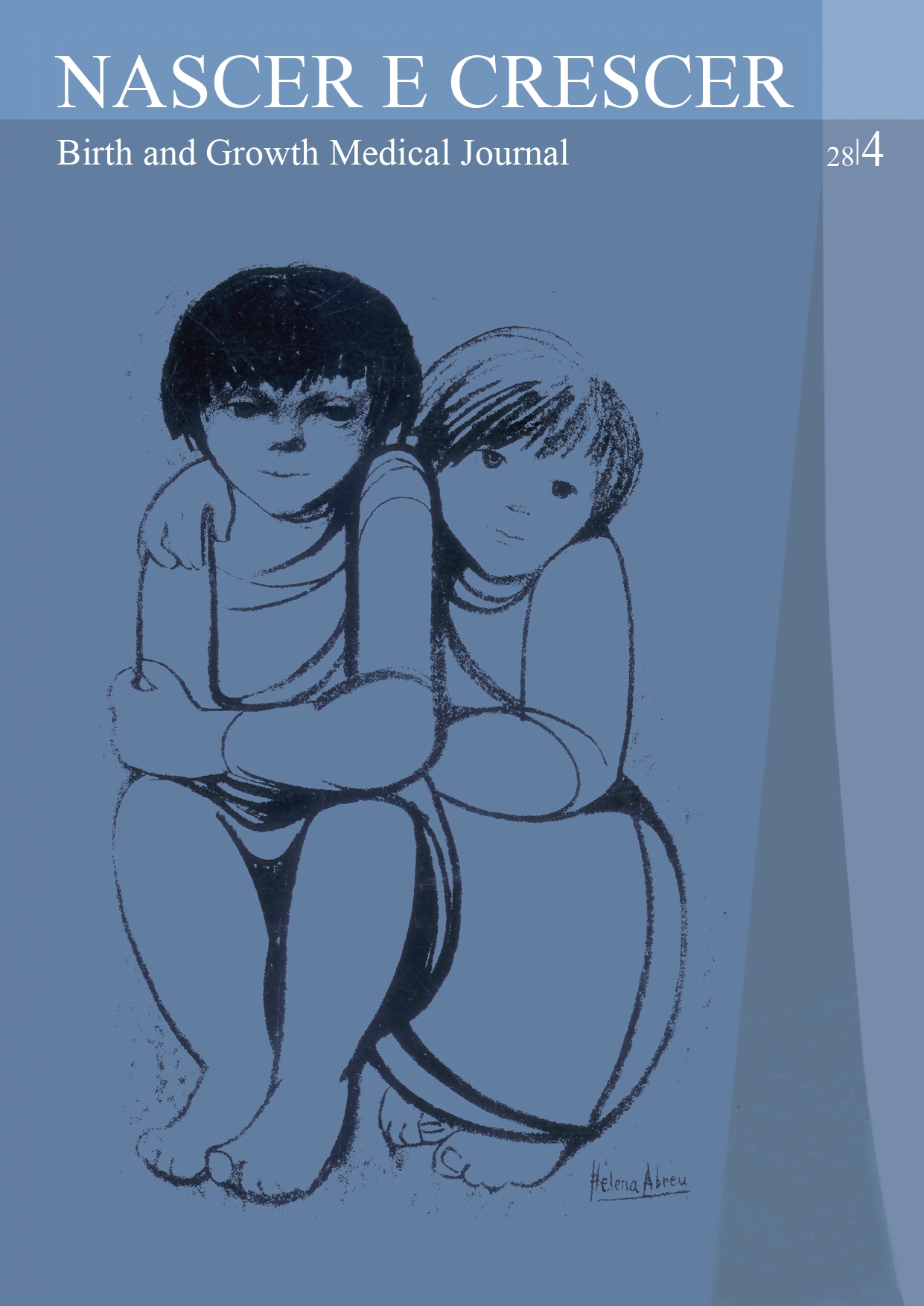Time to diagnosis of pediatric oncologic disease: Ten-year experience from a Level II hospital
DOI:
https://doi.org/10.25753/BirthGrowthMJ.v28.i4.15328Keywords:
child, neoplasm, time to diagnosisAbstract
Objectives: Despite rare, childhood cancer is a major cause of child morbidity and mortality. Reducing time to diagnosis and engaging health professionals in early treatment are key when dealing with pediatric cancer. In this study, time to diagnosis and its determinants were assessed.
Methods: A descriptive and observational study in the Pediatric Department of a Level II hospital was conducted using clinical records of children diagnosed with cancer between 2007 and 2016. Using Mann-Whitney’s test, Kruskal-Wallis’ test, and Spearman’s correlation test, differences in time to diagnosis across subgroups of children according to age, gender, parental age, type of first medical visit, and diagnosis were assessed.
Results: One hundred and five pediatric tumor cases were included in the analysis: 48 (46%) brain and central nervous system tumors, 32 (30%) hematological tumors, and 25 (24%) solid tumors. In the hematological subgroup, older age was associated with longer time to medical services demand (r=0.38, p=0.04) and children initially observed in primary health care exhibited longer time to diagnosis compared with children initially observed in Pediatric emergency services (median 1.9 vs 0 weeks, p=0.01). The median number of medical visits before the definitive diagnosis was one (min=0, max=7).
Conclusions: Differences found in time to diagnosis between different types of medical services disclose the need for improving diagnosis in the primary care setting. A high index of suspicion is mandatory, especially among adolescents, as this is a subgroup typically associated with longer times to diagnosis.
Downloads
References
2. Ward E, Desantis C, Robbins A, Kohler B, Jemal A. Childhood and Adolescent Cancer Statistics , 2014. Ca Cancer J Clin. 2014; 64:83-103. doi:10.3322/caac.21219.
3. Steliarova-Foucher E, Colombet M, Ries LAG, Moreno F, Dolya A, Bray F, et al. International incidence of childhood cancer, 2001–10: a population-based registry study. Lancet Oncol. 2017; 18:719-31. doi:10.1016/S1470-2045(17)30186-9.
4. Steliarova-Foucher E, Fidler MM, Colombet M, Lacour B, Kaatsch P, Piñeros M, et al. Changing geographical patterns and trends in cancer incidence in children and adolescents in Europe, 1991–2010 (Automated Childhood Cancer Information System): a population-based study. Lancet Oncol. 2018; 19:1159-69. doi:10.1016/S1470-2045(18)30423-6.
5. Lacerda AF, Neto A, Teixeira A, Costa C, Pedroso E, Pereira F, et al. A Criança Com Doença Oncológica - Guia de Apoio Para Os Serviços de Pediatria. Serviço de Pediatria Instituto Português de Oncologia de Lisboa Francisco Gentil, EPE.; 2007.
6. Dang-Tan T, Franco EL. Diagnosis delays in childhood cancer: A review. Cancer. 2007; 110:703-13. doi:10.1002/cncr.22849.
7. Brasme JF, Morfouace M, Grill J, Martinot A, Amalberti R, Bons-Letouzey C, et al. Delays in diagnosis of paediatric cancers: A systematic review and comparison with expert testimony in lawsuits. Lancet Oncol. 2012; 13:e445-59. doi:10.1016/S1470-2045(12)70361-3.
8. Barr RD. “Delays” in diagnosis: a misleading concept, yet providing opportunities for advancing clinical care. J Pediatr Hematol Oncol. 2014; 36:169-72. doi:10.1097/MPH.0000000000000108.
9. Nazemi KJ, Malempati S. Emergency Department Presentation of Childhood Cancer. Emerg Med Clin North Am. 2009; 27:477-95. doi:10.1016/j.emc.2009.04.008.
10. Arnautovic A, Billups C, Broniscer A, Gajjar A, Boop F, Qaddoumi I. Delayed diagnosis of childhood low-grade glioma: causes, consequences, and potential solutions. Child’s Nerv Syst. 2015; 31:1067-77. doi:10.1007/s00381-015-2670-1.
11. Mehta V, Chapman A, McNeely PD, Walling S, Howes WJ. Latency Between Symptom Onset and Diagnosis Pediatric Brain Tumors: An Eastern Canadian Geographic Study. Neurosurgery. 2002; 51:365-73. doi:10.1227/01.NEU.0000019779.27789.AC.
Downloads
Published
How to Cite
Issue
Section
License
Copyright and Authors' Rights
All articles published in Nascer e Crescer - Birth and Growth Medical Journal are Open Access and comply with the requirements of funding agencies or academic institutions. For use by third parties, Nascer e Crescer - Birth and Growth Medical Journal adheres to the terms of the Creative Commons License "Attribution - Non-Commercial Use (CC-BY-NC)".
It is the author's responsibility to obtain permission to reproduce figures, tables, etc. from other publications.
Authors must submit a Conflict of Interest statement and an Authorship Form with the submission of the article. An e-mail will be sent to the corresponding author confirming receipt of the manuscript.
Authors are permitted to make their articles available in repositories at their home institutions, provided that they always indicate where the articles were published and adhere to the terms of the Creative Commons license.


